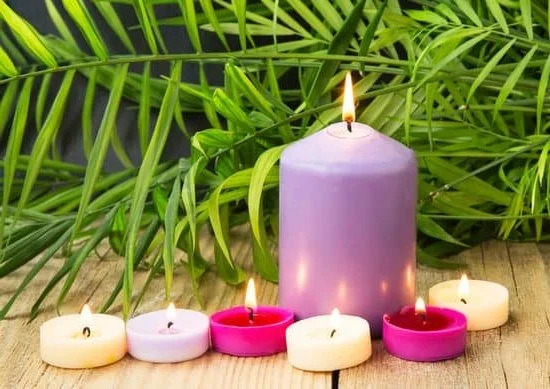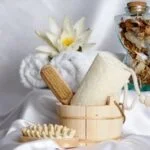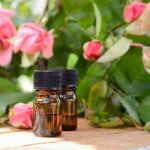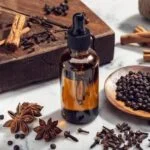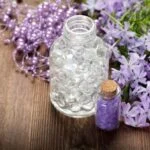Aromatherapy massage is a holistic healing technique that combines the benefits of therapeutic massage with the calming and rejuvenating properties of essential oils. This unique form of massage is not only relaxing for the body, but also provides numerous physical, mental, and emotional benefits. By incorporating specific essential oils into the massage process, aromatherapy massage offers a truly immersive and therapeutic experience.
The use of essential oils is a fundamental aspect of aromatherapy massage. These oils are derived from natural plant sources and have been used for centuries to promote overall well-being. During an aromatherapy massage, these oils are expertly blended and applied to the skin through gentle strokes and acupressure movements. The combination of touch and aroma creates a powerful synergy that can enhance relaxation, alleviate muscle tension, reduce pain, relieve stress, and more.
By harnessing the power of scent and touch, aromatherapy massage goes beyond traditional massages to provide a comprehensive wellness experience. Whether you’re seeking physical relief or looking to improve your mental and emotional state, this form of therapy has something to offer everyone.
In the following sections, we will explore the history of aromatherapy massage, delve into the science behind its effectiveness, discuss its wide-ranging benefits, examine different techniques and essential oils used in this type of massage, as well as provide guidance on how to incorporate it into your daily routine.
Through understanding aromatherapy massage in its entirety, you’ll be able to tap into its incredible potential for enhancing your overall well-being. Join us as we embark on this aromatic journey towards improved health and rejuvenation.
History of Aromatherapy Massage
Aromatherapy massage is not a new practice, but has been practiced for thousands of years by various civilizations. The history of aromatherapy massage traces back to ancient times when it was used as a healing technique and a way to enhance overall well-being.
One of the earliest uses of aromatherapy massage can be traced back to ancient Egypt. Egyptians were known for their extensive knowledge in herbal remedies and aromatic oils. They believed that essential oils possessed healing properties that could treat both physical and spiritual ailments. Aromatic oils were used during massages, baths, and religious ceremonies.
Aromatherapy massage also had deep roots in ancient China and India. In China, essential oils were used as part of traditional Chinese medicine, particularly in acupuncture and acupressure treatments. Similarly, in India, aromatherapy massage was a fundamental aspect of Ayurvedic medicine, which believed that the body could be balanced through the use of essential oils.
Over time, aromatherapy massage techniques spread throughout Europe during the Middle Ages. However, it wasn’t until the 20th century that the term “aromatherapy” was coined by French chemist René-Maurice Gattefossé. He discovered the healing properties of lavender oil when he accidentally burned himself and found relief after applying lavender oil on his wounds.
The history of aromatherapy massage showcases its long-standing significance in various cultures around the world. It has evolved from ancient rituals to a widely recognized therapeutic practice today. This rich history serves as a testament to the effectiveness and enduring benefits that can be derived from this age-old practice.
The Science Behind Aromatherapy Massage
Aromatherapy massage is not only a relaxing experience, but it also has various physical and mental benefits. These benefits can be attributed to the science behind aromatherapy massage and how essential oils interact with the body and mind.
One of the main ways that essential oils used in aromatherapy massage work is through their impact on emotions and mood. Our sense of smell is directly connected to our limbic system, which is responsible for emotions and memories. When we inhale the aroma of essential oils during a massage, it can trigger emotional responses and promote relaxation, stress relief, and enhanced mood.
In addition to their impact on emotions, essential oils also have chemical properties that can benefit the body. For example, certain essential oils have anti-inflammatory properties that can help reduce pain and inflammation. Others have analgesic properties that can provide relief from muscle tension and soreness. The chemical components in essential oils interact with receptors in our body to produce these therapeutic effects.
To better understand the science behind aromatherapy massage, researchers have conducted studies to explore its effectiveness. One study published in the Journal of Clinical Psychology found that aromatherapy massage reduced anxiety levels in patients with cancer undergoing radiation therapy. Another study published in Complementary Therapies in Clinical Practice showed that lavender oil used in aromatherapy massage improved sleep quality in patients with insomnia.
| Physical Benefits | Mental Benefits |
|---|---|
| – Relief from muscle tension and soreness | – Stress and anxiety relief |
| – Improved blood circulation and oxygen flow | – Enhanced relaxation and sleep quality |
| – Reduction in pain and inflammation | – Mood enhancement and emotional balance |
Physical Benefits of Aromatherapy Massage
Aromatherapy massage not only promotes relaxation, but it also provides numerous physical benefits for the body. One of the primary physical benefits is the relief from muscle tension and soreness. The combination of massage techniques and essential oils helps to relax tight muscles and release built-up tension. This can be particularly beneficial for individuals who engage in physically demanding activities or those who experience chronic muscle pain.
In addition to relieving muscle tension, aromatherapy massage improves blood circulation and oxygen flow throughout the body. The essential oils used in the massage process help to dilate blood vessels, allowing for increased blood flow. This enhanced circulation promotes better delivery of oxygen and nutrients to the cells, resulting in improved overall health and vitality.
Aromatherapy massage is also known to reduce pain and inflammation. Certain essential oils, such as lavender or peppermint, have analgesic properties that can alleviate discomfort caused by headaches, joint pain, or even conditions like arthritis. The anti-inflammatory properties of some essential oils can help reduce inflammation in muscles and joints, leading to decreased pain and swelling.
Overall, incorporating aromatherapy massage into your routine can have significant physical benefits for your body. Whether you need relief from muscle tension or want to improve your overall well-being, this form of therapy provides a natural and holistic approach that targets both the physical body and mind.
Mental and Emotional Benefits of Aromatherapy Massage
Aromatherapy massage not only provides physical benefits but also has numerous mental and emotional benefits. The use of essential oils in the massage process helps stimulate the senses, promoting relaxation, reducing stress and anxiety, enhancing sleep quality, and balancing emotions.
Stress and Anxiety Relief
One of the key mental benefits of aromatherapy massage is stress and anxiety relief. Essential oils such as lavender, chamomile, bergamot, and ylang-ylang have calming properties that can help relax the mind and body. When these oils are incorporated into a massage session, they can help alleviate symptoms of stress and anxiety by promoting a sense of peace and tranquility.
Studies have shown that aromatherapy massage can significantly reduce cortisol levels in the body, which is a hormone associated with stress. By lowering cortisol levels, aromatherapy massage helps induce a state of relaxation and promotes feelings of well-being.
Enhanced Relaxation and Sleep Quality
Aromatherapy massage is known to enhance relaxation by soothing both the mind and body. The combination of gentle touch during the massage and the aromatic scents of essential oils creates an environment conducive to deep relaxation.
Certain essential oils such as lavender have been specifically proven to improve sleep quality. Lavender oil has sedative properties that can promote better sleep by helping individuals fall asleep faster, improving overall sleep duration, and reducing disturbances during sleep.
Mood Enhancement and Emotional Balance
Another remarkable benefit of aromatherapy massage is its ability to enhance mood and promote emotional balance. Essential oils such as citrus oils (orange, lemon, grapefruit) or uplifting floral oils (rose, jasmine) are frequently used in aromatherapy massages to uplift mood and combat depression.
The aromatic compounds present in essential oils interact with olfactory receptors in our nasal passages, sending signals to our limbic system – the part of the brain responsible for emotions and memories. As a result, these oils can influence our mood by promoting the release of certain neurotransmitters, such as serotonin and endorphins, which are known to enhance feelings of pleasure and happiness.
Aromatherapy Massage Techniques
Aromatherapy massage combines the therapeutic benefits of essential oils with the healing power of touch. This holistic approach to wellness incorporates various techniques that enhance relaxation, relieve muscle tension, and promote overall well-being. Here are some common aromatherapy massage techniques:
Effleurage
Effleurage is a gentle stroking motion that helps to warm up the muscles and prepare them for deeper massage techniques. In aromatherapy massage, this technique is often used at the beginning and end of the session to provide a soothing and calming effect. It involves long, sweeping strokes that glide over the skin using light to medium pressure.
Petrissage
Petrissage refers to kneading and squeezing movements that help to release tension in the muscles. This technique involves gently lifting, squeezing, and rolling of the muscles using both hands or thumbs. Petrissage promotes better blood circulation, loosens knots in the muscles, and enhances deep relaxation.
Fractionated Pressure
Fractionated pressure is a technique commonly used in aromatherapy massage to target specific areas of muscular tension or discomfort. By applying firm pressure with fingertips or palms over particular points on the body, a practitioner can release tightness and restore balance. Fractionated pressure can be used in conjunction with effleurage or petrissage techniques for maximum effectiveness.
Incorporating essential oils into these massage techniques further amplifies their benefits. The essential oils are typically diluted with carrier oils before being applied to the skin during the massage. Additionally, different essential oils can be chosen based on their specific properties and desired effects. For example, lavender oil is often used for relaxation purposes while peppermint oil provides a cooling sensation that helps invigorate both body and mind.
When practicing aromatherapy massage at home, it’s important to choose a quiet and comfortable space where you can relax without distractions. Make sure to dilute essential oils properly and do a patch test before applying them to your skin to reduce the risk of allergic reactions. Remember to perform these techniques with moderate pressure and avoid any areas that are injured or inflamed.
By understanding and applying aromatherapy massage techniques correctly, individuals can truly harness the healing power of essential oils and experience the profound benefits for their physical, mental, and emotional well-being.
Popular Essential Oils Used in Aromatherapy Massage
Lavender: known for its calming and sleep-inducing properties
One of the most popular essential oils used in aromatherapy massage is lavender. Known for its calming and soothing properties, lavender oil is often used to promote relaxation and improve sleep quality. The scent of lavender has been found to reduce anxiety and stress levels, making it an excellent choice for individuals who are looking for mental and emotional balance.
In addition to its calming effects, lavender oil has also been found to have pain-relieving properties. When used in aromatherapy massage, it can help alleviate muscle tension and soreness, providing relief for those dealing with physical discomfort. Furthermore, studies have shown that inhaling the aroma of lavender can reduce the perception of pain, making it beneficial for individuals experiencing chronic pain or inflammation.
Peppermint: provides a cooling and invigorating sensation
Another popular essential oil used in aromatherapy massage is peppermint. Known for its refreshing and invigorating properties, peppermint oil is often used to provide a cooling sensation on the skin during the massage. This can be particularly beneficial for athletes or individuals who engage in physical activities as it can help relieve muscle soreness and fatigue.
Peppermint oil has also been found to have analgesic effects, making it effective in reducing pain and inflammation. Its scent has been shown to improve alertness and cognitive performance, making it ideal for those seeking mental stimulation during their massage session. However, it’s important to note that peppermint oil can be strong, so it should be diluted properly before applying it directly on the skin.
Eucalyptus: offers respiratory relief and energizing effects
Eucalyptus essential oil is another popular choice in aromatherapy massage due to its numerous benefits. It is known for its refreshing aroma that can help clear congested airways, providing respiratory relief for individuals dealing with sinus issues or allergies. Additionally, eucalyptus oil has anti-inflammatory properties that can aid in reducing pain and inflammation in the body.
In terms of mental and emotional benefits, eucalyptus oil is often used to promote an energizing and invigorating effect. Its fragrance can help improve focus and enhance concentration, making it beneficial for those needing a mental boost or increased alertness. However, it’s important to use eucalyptus oil in moderation as it can be strong and overpowering if used excessively.
By incorporating these popular essential oils into your aromatherapy massage routine, you can experience their unique benefits on both physical and mental well-being. Whether you’re seeking relaxation, pain relief, or a mood-enhancing experience, lavender, peppermint, and eucalyptus oils are excellent options to consider. Remember to always choose high-quality essential oils from reputable sources and consult with a qualified aromatherapist or massage therapist for guidance on proper usage.
How to Incorporate Aromatherapy Massage into Your Routine
Incorporating aromatherapy massage into your routine can be a wonderful way to enhance your overall well-being. Whether you prefer to visit a qualified aromatherapist or massage therapist, or try out DIY techniques at home, there are several options to explore. Here are some steps to help you incorporate aromatherapy massage into your routine.
First and foremost, it is important to find a qualified professional if you decide to seek out an aromatherapist or massage therapist. Look for someone who has proper training and certification in both aromatherapy and massage therapy. They will have the knowledge and expertise to provide a safe and effective experience. You can ask for recommendations from friends, family, or even search online directories for licensed practitioners in your area.
If you prefer the comfort of your own home, you can also try DIY techniques for aromatherapy massage. Start by creating a relaxing environment with soft lighting, calming music, and comfortable surroundings. Choose a suitable essential oil based on the benefits you are seeking – whether it’s stress relief, muscle relaxation, or mood enhancement.
Essential oils like lavender, chamomile, or ylang-ylang are great options for relaxation and sleep enhancement. Peppermint or eucalyptus oils can be invigorating and provide respiratory relief.
Once you have chosen your essential oil, dilute it with a carrier oil such as sweet almond oil or coconut oil. This will ensure that the essential oil is properly distributed over the skin without causing irritation.
Begin your DIY aromatherapy massage by applying a small amount of diluted oil onto your skin and gently massaging it in circular motions on areas of tension or soreness. You can experiment with different massage techniques such as Swedish massage or deep tissue massage depending on your preferences.
While incorporating aromatherapy massage into your routine can be highly beneficial for overall well-being, it is important to take precautions and follow safety measures when using essential oils. Always do a patch test to check for any allergic reactions before using a new oil.
Avoid applying essential oils directly onto the skin without dilution, as they can be highly concentrated and may cause skin irritation. Additionally, consult with a healthcare professional if you have any underlying health conditions or are pregnant, as some essential oils may not be suitable for certain individuals.
By incorporating aromatherapy massage into your routine, whether through a professional therapist or by creating your own relaxing environment at home, you can experience the many physical, mental, and emotional benefits that this holistic therapy has to offer. Take the time to explore different essential oils and massage techniques to find what works best for you and harness the healing power of aromatherapy massage for your overall well-being.
Conclusion
In conclusion, aromatherapy massage offers a multitude of benefits for both the body and mind. Throughout history, this practice has evolved into a powerful healing technique with proven results. The physical benefits include relief from muscle tension, improved blood circulation, and reduced pain and inflammation. Additionally, the mental and emotional benefits encompass stress and anxiety relief, enhanced relaxation and sleep quality, along with mood enhancement and emotional balance.
By understanding the science behind aromatherapy massage, it becomes clear that essential oils play a crucial role in triggering chemical reactions in the body that promote healing. These oils have the power to impact our emotions and mood through their scent alone. By incorporating different massage techniques and carefully selecting the right essential oils for specific benefits, individuals can harness the full potential of aromatherapy massage.
To experience these benefits firsthand, it is important to find a qualified aromatherapist or massage therapist who can provide professional treatment. However, there are also techniques that can be practiced at home for those who prefer DIY methods. It is important to take precautions and follow safety measures when using essential oils for massage to avoid any adverse effects.
Ultimately, embracing the power of aromatherapy massage can greatly contribute to overall well-being. By recapitulating its many advantages and encouraging individuals to explore different essential oils and their healing properties in massage, we open ourselves up to a world of relaxation, balance, and improved health on both physical and mental levels.
Frequently Asked Questions
What is the difference between a normal massage and an aromatherapy massage?
A normal massage typically focuses on manipulating the body’s muscles and soft tissues to provide relaxation, pain relief, or other therapeutic benefits. It can include techniques such as kneading, rubbing, and pressing on different areas of the body. On the other hand, an aromatherapy massage combines the physical benefits of a regular massage with the use of essential oils derived from plants.
These essential oils are carefully chosen for their specific properties and scents that can enhance relaxation, uplift mood, or promote physical healing. The aromatic scents of the oils are believed to have various therapeutic effects on both the body and mind.
What is an aromatherapy full body massage?
An aromatherapy full body massage is a treatment that involves applying the principles of aromatherapy throughout the entire body. Essential oils are selected based on their individual properties and blended together with a carrier oil. During the massage session, these oil blends are applied through long strokes and gentle kneading techniques on all parts of the body, including back, neck, arms, legs, hands, and feet.
The therapist may also incorporate other massage techniques depending on your preferences or specific needs. This holistic approach aims to promote overall relaxation while providing an opportunity for deep nourishment and rejuvenation both physically and mentally.
How often should you do aromatherapy massage?
The frequency of aromatherapy massages depends on various factors such as personal preference, health conditions, budget considerations, and treatment goals. However it is generally recommended to schedule regular sessions for optimal benefits. Many people find that having an aromatherapy massage once a week or every two weeks works well for them in maintaining a consistent state of relaxation and well-being.
If you have specific health concerns or chronic conditions that require ongoing care or management through aromatherapy massage, your therapist may recommend more frequent sessions initially followed by less frequent maintenance sessions as your condition improves. Ultimately, it is important to listen to your own body’s needs and balance both time and financial resources when deciding how often you should indulge in this therapeutic experience.

Are you looking for a natural way to improve your health and wellbeing?
If so, aromatherapy may be the answer for you.

